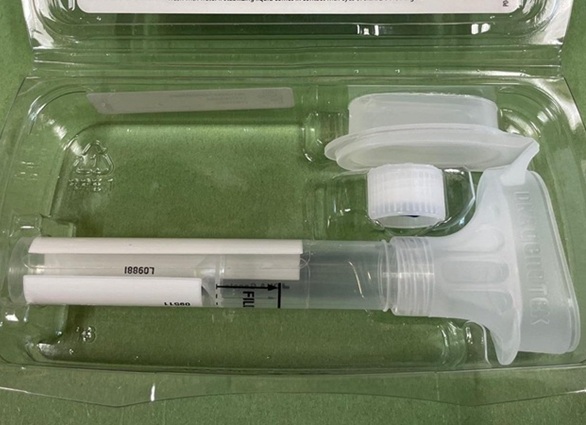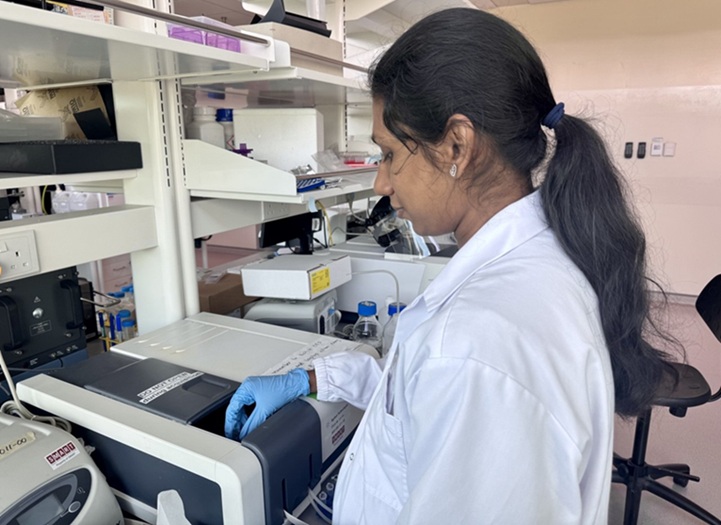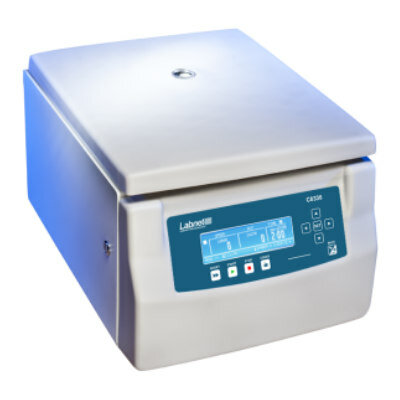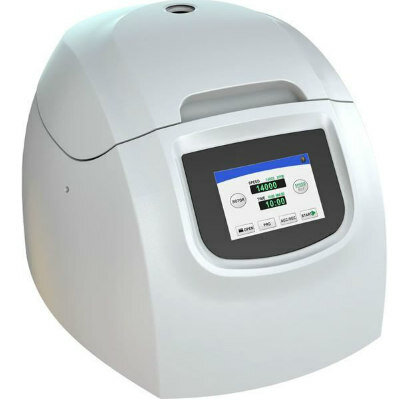Serum Amyloid A Levels Linked to Likelihood of Developing Severe COVID-19
|
By LabMedica International staff writers Posted on 26 Apr 2021 |
![Image: This illustration reveals ultrastructural morphology exhibited by the coronavirus that causes COVID-19. Note the spikes that adorn the outer surface of the virus, which impart the look of a corona surrounding the virion (Photo courtesy of [U.S.] Centers for Disease Control and Prevention) Image: This illustration reveals ultrastructural morphology exhibited by the coronavirus that causes COVID-19. Note the spikes that adorn the outer surface of the virus, which impart the look of a corona surrounding the virion (Photo courtesy of [U.S.] Centers for Disease Control and Prevention)](https://globetechcdn.com/mobile_labmedica/images/stories/articles/article_images/2021-04-26/GMS-030B.jpg)
Image: This illustration reveals ultrastructural morphology exhibited by the coronavirus that causes COVID-19. Note the spikes that adorn the outer surface of the virus, which impart the look of a corona surrounding the virion (Photo courtesy of [U.S.] Centers for Disease Control and Prevention)
Results of research papers published during the current pandemic suggest that increased levels of the blood biomarker serum amyloid A predict development of severe or fatal forms of COVID-19.
Serum amyloid A (SAA) proteins are a family of apolipoproteins associated with high-density lipoprotein (HDL) in plasma. Acute-phase serum amyloid A proteins (A-SAAs) are secreted during the acute phase of inflammation. A-SAA genes and proteins are significantly activated during the acute phase response, which comprises a number of phenomena that occur in the presence of inflammation and infection, e.g., increased temperature and hormonal and metabolic alterations.
Circulating SAA concentrations, typically low under physiological circumstances, can increase up to 1000-fold within the first 24 to 48 hours of an acute phase response. This is the consequence of increased synthesis in the liver that is triggered by several stimuli, including tumor necrosis factor (TNF), interleukin (IL)-1beta, IL-6, and interferon gamma (IFN-gamma). SAA, in turn, can activate the complement system and further increase the synthesis of TNF, IL-1beta, and IL-6, and activate other proinflammatory cytokines such as IL-1alpha and IL-23.
Two systematic reviews and meta-analyses on a relatively limited number of studies, had reported a significant and positive association between SAA concentrations and COVID-19 severity. Thus, it was plausible that the acute increase in SAA concentrations in patients with COVID-19 might not only reflect the presence of an acute phase response, but also herald the development of a cytokine storm and, consequently, multi-organ failure and an increased risk of adverse outcomes.
In this light, investigators at Flinders University (Adelaide, Australia) and the University of Sassari (Italy) analyzed results from nineteen published studies involving 5617 COVID-19 patients to determine if a link could be demonstrated between SAA levels and COVID-19.
The investigators reported that pooled results indicated that SAA concentrations were significantly higher in patients with severe disease and non-survivors than in patients with mild disease or controls. SAA concentrations were significantly and positively associated with higher COVID-19 severity and mortality.
"Our analyses showed that COVID-19 patients with severe disease or who eventually died had significantly higher levels of SAA when compared to patients with mild COVID-19," said senior author Dr. Arduino Mangon, professor of clinical pharmacology at Flinders University. Patients with severe forms of coronavirus disease 2019 have excessive inflammation, alterations in clot formation, and significant damage in several organs, particularly the lung, the kidney, the heart, and the liver. This chemical [SAA] may help, together with other patient characteristics, in predicting which COVID-19 patients are likely to deteriorate and require aggressive management."
The serum amyloid A study was published in the March 15, 2021, online edition of the International Journal of Infectious Diseases.
Related Links:
Flinders University
University of Sassari
Serum amyloid A (SAA) proteins are a family of apolipoproteins associated with high-density lipoprotein (HDL) in plasma. Acute-phase serum amyloid A proteins (A-SAAs) are secreted during the acute phase of inflammation. A-SAA genes and proteins are significantly activated during the acute phase response, which comprises a number of phenomena that occur in the presence of inflammation and infection, e.g., increased temperature and hormonal and metabolic alterations.
Circulating SAA concentrations, typically low under physiological circumstances, can increase up to 1000-fold within the first 24 to 48 hours of an acute phase response. This is the consequence of increased synthesis in the liver that is triggered by several stimuli, including tumor necrosis factor (TNF), interleukin (IL)-1beta, IL-6, and interferon gamma (IFN-gamma). SAA, in turn, can activate the complement system and further increase the synthesis of TNF, IL-1beta, and IL-6, and activate other proinflammatory cytokines such as IL-1alpha and IL-23.
Two systematic reviews and meta-analyses on a relatively limited number of studies, had reported a significant and positive association between SAA concentrations and COVID-19 severity. Thus, it was plausible that the acute increase in SAA concentrations in patients with COVID-19 might not only reflect the presence of an acute phase response, but also herald the development of a cytokine storm and, consequently, multi-organ failure and an increased risk of adverse outcomes.
In this light, investigators at Flinders University (Adelaide, Australia) and the University of Sassari (Italy) analyzed results from nineteen published studies involving 5617 COVID-19 patients to determine if a link could be demonstrated between SAA levels and COVID-19.
The investigators reported that pooled results indicated that SAA concentrations were significantly higher in patients with severe disease and non-survivors than in patients with mild disease or controls. SAA concentrations were significantly and positively associated with higher COVID-19 severity and mortality.
"Our analyses showed that COVID-19 patients with severe disease or who eventually died had significantly higher levels of SAA when compared to patients with mild COVID-19," said senior author Dr. Arduino Mangon, professor of clinical pharmacology at Flinders University. Patients with severe forms of coronavirus disease 2019 have excessive inflammation, alterations in clot formation, and significant damage in several organs, particularly the lung, the kidney, the heart, and the liver. This chemical [SAA] may help, together with other patient characteristics, in predicting which COVID-19 patients are likely to deteriorate and require aggressive management."
The serum amyloid A study was published in the March 15, 2021, online edition of the International Journal of Infectious Diseases.
Related Links:
Flinders University
University of Sassari
Latest COVID-19 News
- New Immunosensor Paves Way to Rapid POC Testing for COVID-19 and Emerging Infectious Diseases
- Long COVID Etiologies Found in Acute Infection Blood Samples
- Novel Device Detects COVID-19 Antibodies in Five Minutes
- CRISPR-Powered COVID-19 Test Detects SARS-CoV-2 in 30 Minutes Using Gene Scissors
- Gut Microbiome Dysbiosis Linked to COVID-19
- Novel SARS CoV-2 Rapid Antigen Test Validated for Diagnostic Accuracy
- New COVID + Flu + R.S.V. Test to Help Prepare for `Tripledemic`
- AI Takes Guesswork Out Of Lateral Flow Testing
- Fastest Ever SARS-CoV-2 Antigen Test Designed for Non-Invasive COVID-19 Testing in Any Setting
- Rapid Antigen Tests Detect Omicron, Delta SARS-CoV-2 Variants
- Health Care Professionals Showed Increased Interest in POC Technologies During Pandemic, Finds Study
- Set Up Reserve Lab Capacity Now for Faster Response to Next Pandemic, Say Researchers
- Blood Test Performed During Initial Infection Predicts Long COVID Risk
- Low-Cost COVID-19 Testing Platform Combines Sensitivity of PCR and Speed of Antigen Tests
- Finger-Prick Blood Test Identifies Immunity to COVID-19
- Quick Test Kit Determines Immunity Against COVID-19 and Its Variants
Channels
Clinical Chemistry
view channel
‘Brilliantly Luminous’ Nanoscale Chemical Tool to Improve Disease Detection
Thousands of commercially available glowing molecules known as fluorophores are commonly used in medical imaging, disease detection, biomarker tagging, and chemical analysis. They are also integral in... Read more
Low-Cost Portable Screening Test to Transform Kidney Disease Detection
Millions of individuals suffer from kidney disease, which often remains undiagnosed until it has reached a critical stage. This silent epidemic not only diminishes the quality of life for those affected... Read more
New Method Uses Pulsed Infrared Light to Find Cancer's 'Fingerprints' In Blood Plasma
Cancer diagnoses have traditionally relied on invasive or time-consuming procedures like tissue biopsies. Now, new research published in ACS Central Science introduces a method that utilizes pulsed infrared... Read moreHematology
view channel
New Scoring System Predicts Risk of Developing Cancer from Common Blood Disorder
Clonal cytopenia of undetermined significance (CCUS) is a blood disorder commonly found in older adults, characterized by mutations in blood cells and a low blood count, but without any obvious cause or... Read more
Non-Invasive Prenatal Test for Fetal RhD Status Demonstrates 100% Accuracy
In the United States, approximately 15% of pregnant individuals are RhD-negative. However, in about 40% of these cases, the fetus is also RhD-negative, making the administration of RhoGAM unnecessary.... Read moreImmunology
view channel
Stem Cell Test Predicts Treatment Outcome for Patients with Platinum-Resistant Ovarian Cancer
Epithelial ovarian cancer frequently responds to chemotherapy initially, but eventually, the tumor develops resistance to the therapy, leading to regrowth. This resistance is partially due to the activation... Read more
Machine Learning-Enabled Blood Test Predicts Immunotherapy Response in Lymphoma Patients
Chimeric antigen receptor (CAR) T-cell therapy has emerged as one of the most promising recent developments in the treatment of blood cancers. However, over half of non-Hodgkin lymphoma (NHL) patients... Read moreMicrobiology
view channel
Handheld Device Delivers Low-Cost TB Results in Less Than One Hour
Tuberculosis (TB) remains the deadliest infectious disease globally, affecting an estimated 10 million people annually. In 2021, about 4.2 million TB cases went undiagnosed or unreported, mainly due to... Read more
New AI-Based Method Improves Diagnosis of Drug-Resistant Infections
Drug-resistant infections, particularly those caused by deadly bacteria like tuberculosis and staphylococcus, are rapidly emerging as a global health emergency. These infections are more difficult to treat,... Read more
Breakthrough Diagnostic Technology Identifies Bacterial Infections with Almost 100% Accuracy within Three Hours
Rapid and precise identification of pathogenic microbes in patient samples is essential for the effective treatment of acute infectious diseases, such as sepsis. The fluorescence in situ hybridization... Read morePathology
view channel
Spit Test More Accurate at Identifying Future Prostate Cancer Risk
Currently, blood tests that measure the level of a protein called prostate-specific antigen (PSA) are commonly used to identify men at higher risk for prostate cancer. This test is typically used based... Read moreDNA Nanotechnology Boosts Sensitivity of Test Strips
Since the Covid-19 pandemic, most people have become familiar with paper-based rapid test strips, also known as lateral flow immunoassays (LFIAs). These tests are used to quickly detect biomarkers that... Read more
Novel UV and Machine Learning-Aided Method Detects Microbial Contamination in Cell Cultures
Cell therapy holds great potential in treating diseases such as cancers, inflammatory conditions, and chronic degenerative disorders by manipulating or replacing cells to restore function or combat disease.... Read moreTechnology
view channel
Disposable Microchip Technology Could Selectively Detect HIV in Whole Blood Samples
As of the end of 2023, approximately 40 million people globally were living with HIV, and around 630,000 individuals died from AIDS-related illnesses that same year. Despite a substantial decline in deaths... Read more
Pain-On-A-Chip Microfluidic Device Determines Types of Chronic Pain from Blood Samples
Chronic pain is a widespread condition that remains difficult to manage, and existing clinical methods for its treatment rely largely on self-reporting, which can be subjective and especially problematic... Read more
Innovative, Label-Free Ratiometric Fluorosensor Enables More Sensitive Viral RNA Detection
Viruses present a major global health risk, as demonstrated by recent pandemics, making early detection and identification essential for preventing new outbreaks. While traditional detection methods are... Read moreIndustry
view channel
Cepheid and Oxford Nanopore Technologies Partner on Advancing Automated Sequencing-Based Solutions
Cepheid (Sunnyvale, CA, USA), a leading molecular diagnostics company, and Oxford Nanopore Technologies (Oxford, UK), the company behind a new generation of sequencing-based molecular analysis technologies,... Read more
Grifols and Tecan’s IBL Collaborate on Advanced Biomarker Panels
Grifols (Barcelona, Spain), one of the world’s leading producers of plasma-derived medicines and innovative diagnostic solutions, is expanding its offer in clinical diagnostics through a strategic partnership... Read more





















